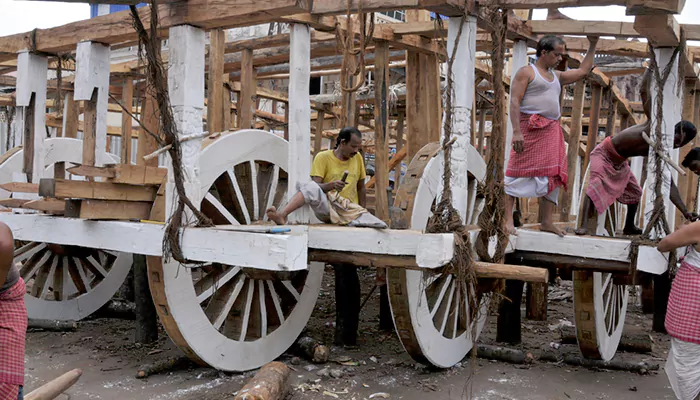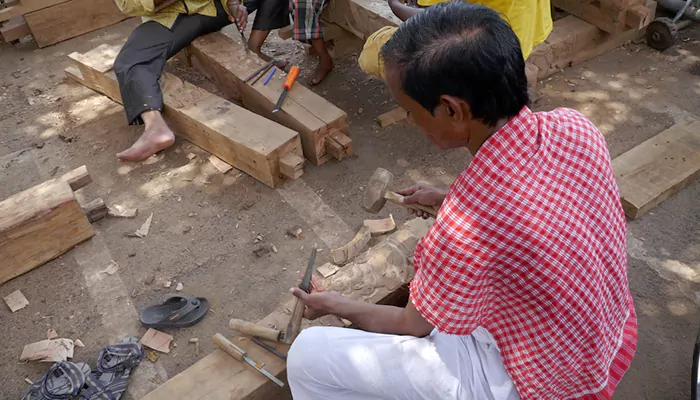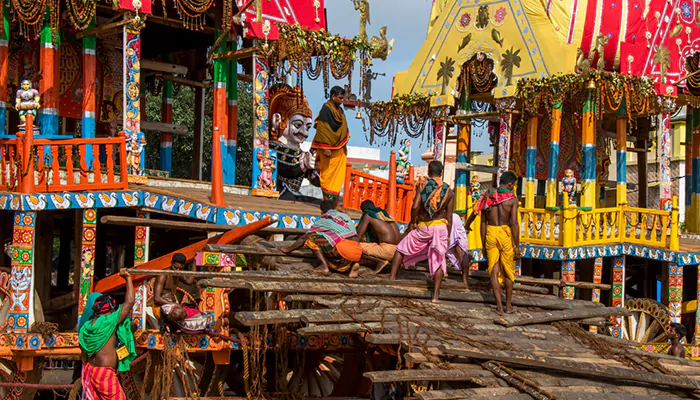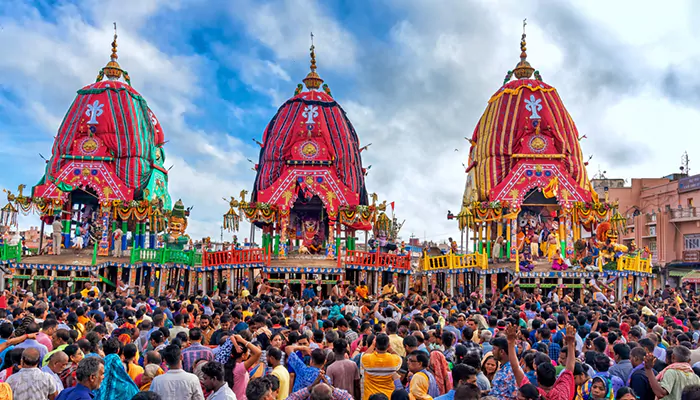
Built without blueprints and powered by devotion, the chariots of Rath Yatra are moving monuments to India’s living heritage.
Rath Yatra marks the grand ceremonial journey of Lord Jagannath, along with his siblings Balabhadra and Subhadra, from the Jagannath Temple to the Gundicha Temple—believed to be their aunt’s abode. The deities are carried in three massive, intricately carved wooden chariots, or raths, pulled by thousands of devoted followers. This sacred act of pulling the chariots is believed to purify the soul and bring spiritual merit. This year, the Rath Yatra commences today, June 27. The vibrant procession travels about three kilometers along the Bada Danda, or Grand Road, culminating at the Gundicha Temple. The construction of the Rath Yatra chariots is, in itself, a deeply devotional act—one that holds great cultural and spiritual significance. Let’s explore this meaningful process in more detail.

Each year, the three majestic chariots of Lord Jagannath, Balabhadra, and Subhadra are meticulously rebuilt from scratch using wood sourced from specific trees like ‘phassi’ and ‘dhausa’. Though made anew each time, the chariots look exactly the same every year. What’s truly astonishing, however, is the remarkable craftsmanship behind them—largely unknown to many. Did you know that the craftsmen use no manuals or blueprints to craft these identical chariots? Surprising, isn’t it?
The entire process is a massive collaborative effort involving carpenters, blacksmiths, painters, and tailors, who come together for 58 days to bring these chariots to life. Construction begins on the auspicious day of Akshaya Tritiya and is completed just in time for the festival. They don’t use modern machines—only traditional tools like chisels. Even measurements are done in ‘haat’ (hand length) and ‘anguli’ (finger width), not in feet or inches.

One of the craftsmen when asked about their technique remarked, “My father has given me a stick. This stick is considered as one 'Haat'. It is equivalent to 20 inches. Twenty-five ‘Angulis’ make a ‘Haat’. We use these measures to calibrate the height and width of the chariots.”
These craftsmen have no formal training—their knowledge comes from generations of hands-on learning, passed down through families who hold the right to build the chariots. Over 4,000 pieces of wood go into building them each year.
To ensure the procession goes smoothly, teams from the Public Works Department and Indian Railways remain on standby to assist in case of any breakdowns during the journey. Once the Rath Yatra concludes, the chariots are dismantled. Most parts are auctioned off, while the remaining wood is sent to the temple kitchen, continuing to serve the divine purpose even after the festival ends.

The Nandighosh Ratha, devoted to Lord Jagannath, is the tallest of the three, standing proudly at an impressive 44 feet 2 inches. This grand chariot is fitted with 16 wheels and crafted from 832 pieces of wood.
The Darpadalana Ratha, built for Goddess Subhadra, rises to a height of 42 feet 3 inches, with 12 wheels and 593 wooden pieces making up its structure.
The Taladhwaja Ratha, built for Lord Balabhadra, measures 43 feet 3 inches in height, supported by 14 wheels and assembled using 763 wooden pieces.
The intricate design and decoration of these majestic chariots are beautifully detailed in the ‘Skanda Purana.’

To dress these chariots in divine splendour, 1,120 meters of cloth is used in total.
As the chariots roll down the Grand Road, they carry not just the deities, but centuries of tradition and craftsmanship.